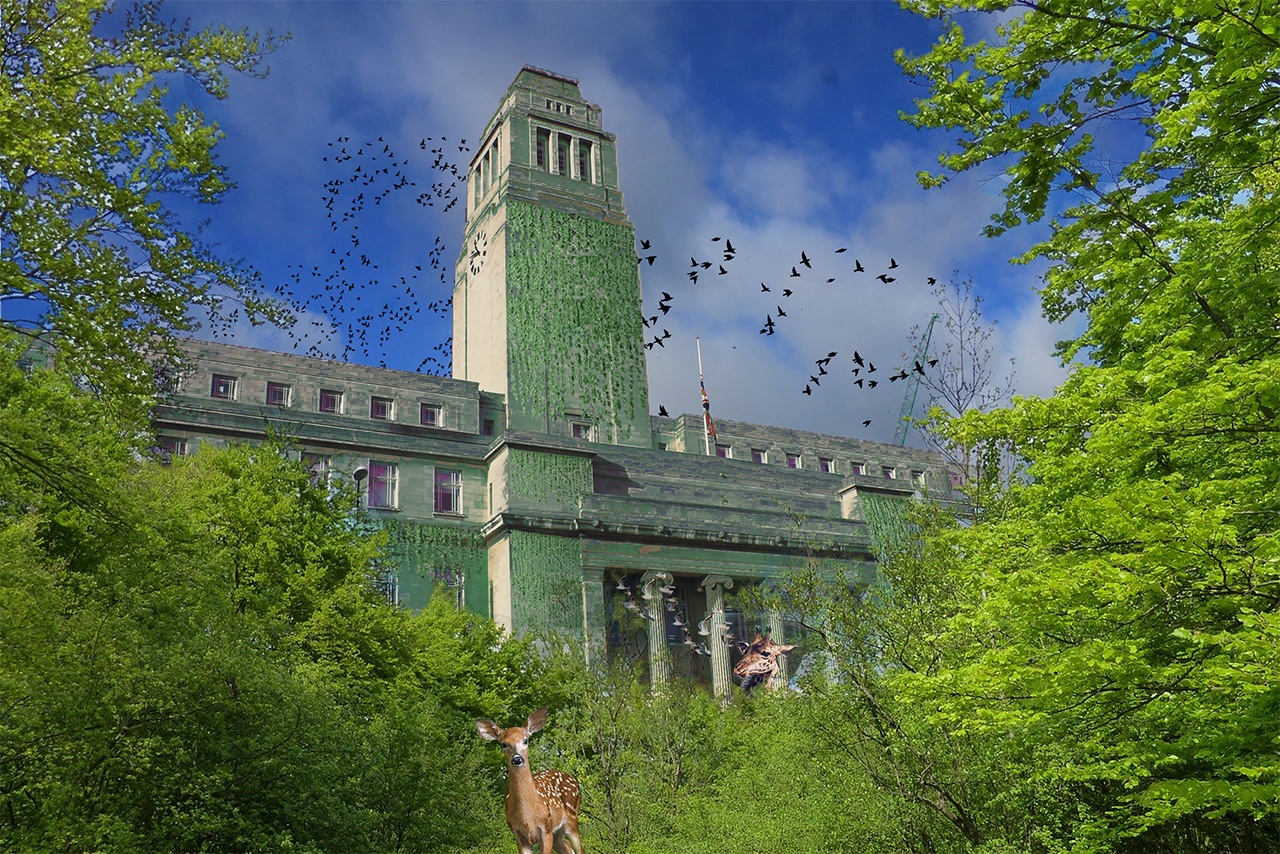Just mere weeks after campus closed, the University of Leeds campus has been declared a UNESCO World Heritage Site.
A World Heritage Site is a landmark or area, selected by the United Nations Educational, Scientific and Cultural Organization (UNESCO) for having cultural, historical, scientific or other form of significance. There were reports that this was as a result of campus returning to its natural state after students left at the end of March. Detailed photographs posted on rival news publication Memerva showed an abundance of wildlife in the Roger Stevens Pond and the streets of Hyde Park.
In order to find out why campus had been given such a prestigious honor, a few reporters from the Gryphon team decided to return to campus to explore and investigate.
Upon their return from the wilderness there, The Gryphon has much to report. Shockingly, campus has seen significant growth in flora with ivy and plants photographed adorning iconic buildings such as Roger Stevens, Parkinson’s, and the infamous “Bacon Statue”.
It must also be noted our reports also show that the University of Leeds campus has one of the most biodiverse areas of the world when it comes to fauna with many animals reported in and amongst the buildings with cows, pigs spotted around the bacon statue, deer, and St. George’s Field becoming a bird sanctuary.
According to Megan Ardis, one of our most senior reporters, ducks were seen having taken over Roger Stevens building though it will likely be sometime before they find their way out. It seems that like students, ducks also can’t cope with brutalist architecture.
As a result of the growth on campus, the University has become the greenest University in the UK so a big win for sustainability and the environment. Clearly the absence of students on campus has done wonders for its biodiversity so it’s no surprise that UNESCO declared it a World Heritage site.

One person was reported to have said upon hearing the news: “not much has changed” arguing there was little difference between its former resident students and the animals that now grace the Red Route.

In Leeds University Union, the building was shown to be reverting back to its original state with extinct outlets Salad Box and Essentials photographed once again after having previously been declared extinct by upper management.



Venturing upstairs to Level One of Leeds University Union, it can be revealed that a llama has now moved into The Gryphon office. Safi Bugel, Editor In Chief-Elect, upon discovering the new resident in the home of Leeds student print journalism said:
“Though its permanent home will be outside once campus returns to normal, we are working with the Union to get the go-ahead for it to spend weekdays within the office. Wellbeing is so important, now more than ever and we feel this would be a massive boost to our members.
After speaking with the llama, we can confirm it will be helping out with our paper deliveries around campus making for a more efficient student newspaper next year”

In other reports, rogue filastompers were seen blowing across campus like tumbleweed particularly in the vicinity of Edward Boyle.




